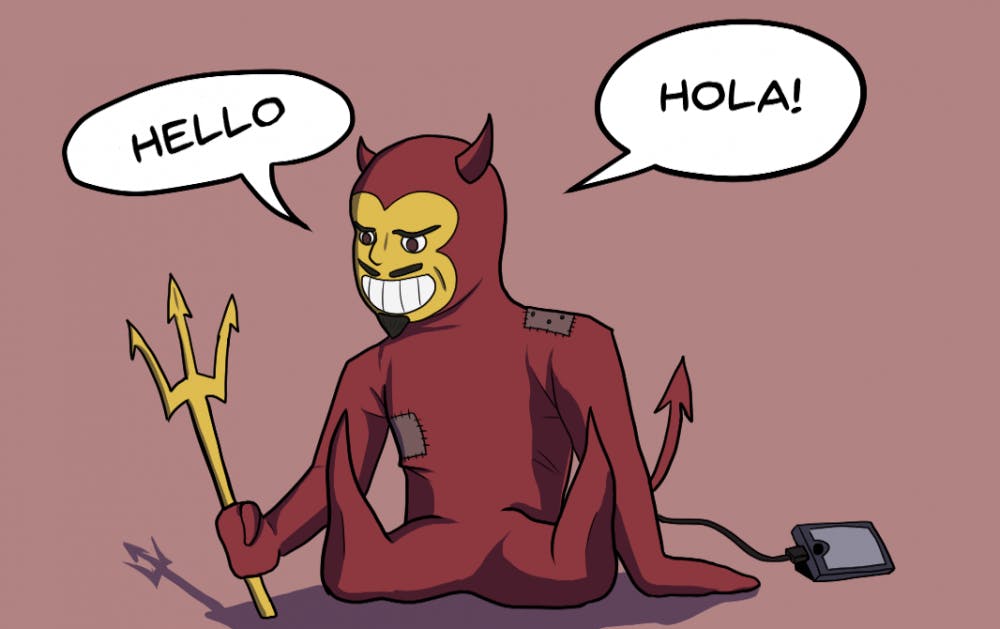Recent ASU graduate Chandler Levine found inspiration for his startup in an unusual place.
A visit to a Build-A-Bear Workshop gave him an idea that stuck with him for years. As his toy bear went down the assembly line, an employee handed Levine a small heart to place inside the plush teddy. The employee promised Levine that if he made a wish, it would come true once it was placed in the bear.
“I was old enough to realize that wasn’t necessarily true, but I still thought, ‘How cool would it be to actually wish for a plush toy to come to life?’” Levine said. “I really wanted to implement that into what we’re doing today.”
Levine, who graduated from ASU last year, serves as the CEO for ToyUp.
Levine formed ToyUp together with Chris Oosthuisen, a senior entrepreneurship major. The startup is focusing on the development and eventual launch of its first product, LINK.
LINK is a computer that is designed to be inserted to plush toys to transform them into interactive language-learning tools.
Oosthuisen said the focus on language education stemmed from his own struggles to master a secondary language in high school. He researched to find an explanation for a problem that seemed so common among his peers.
“We wait too long to teach it, the methods that we’re currently using are not really engaging, and so forth,” Oosthuisen said of the system educators use. “That’s what led us to this path of merging a toy that is not only a companion. It can be fun and exciting but can also teach you in a more interactive and explorative way.”
The computer within the plush toy is designed to be paired with smart stickers and an app that allows users to customize their experience. The smart stickers can be placed throughout the child’s home or learning environment to engage them in a multi-sensory way.
The app allows parents to specify the age of their child and the desired language to learn.
At this point, the product is still in development, but the team has seen early success. They earned the praise of Thomas Kalinske, the former CEO of LeapFrog, SEGA and Mattel, who said their concept “hit the nail on the head.”
Levine consulted Katie Bernstein, an assistant professor at Mary Lou Fulton Teachers College, about early language learning.
Bernstein said it is a “common misconception that kids’ brains are somehow better for learning languages.” She said that humans have a lifelong capacity to learn languages, but that there are advantages to starting early.
“You have a lot less catching up to do to be a proficient speaker at 3 years old than you do at 30 years old,” Bernstein said. “Little kids are often a lot braver at trying out new languages, where adults are worried about being competent.”
Bernstein said ToyUp is part of a trend of gamifying language education to make learning more fun, citing other apps such as Duolingo.
“One of the advantages of that is that people end up practicing a lot more, and that's what we know helps people learn languages,” Bernstein said.
Time dedicated to learning another language is the main component of success, Bernstein said. She said many games help users understand spoken or written language but fail to adequately target the speaking aspects of language acquisition.
“I think Chandler and Chris’s tool will be a great piece of a language learning program, but there will still need to be times when a learner is interacting with humans,” Bernstein said.
Reach the reporter at sabine.galvis@asu.edu or follow @sabinegalvis on Twitter.
Like State Press on Facebook and follow @statepress on Twitter.




